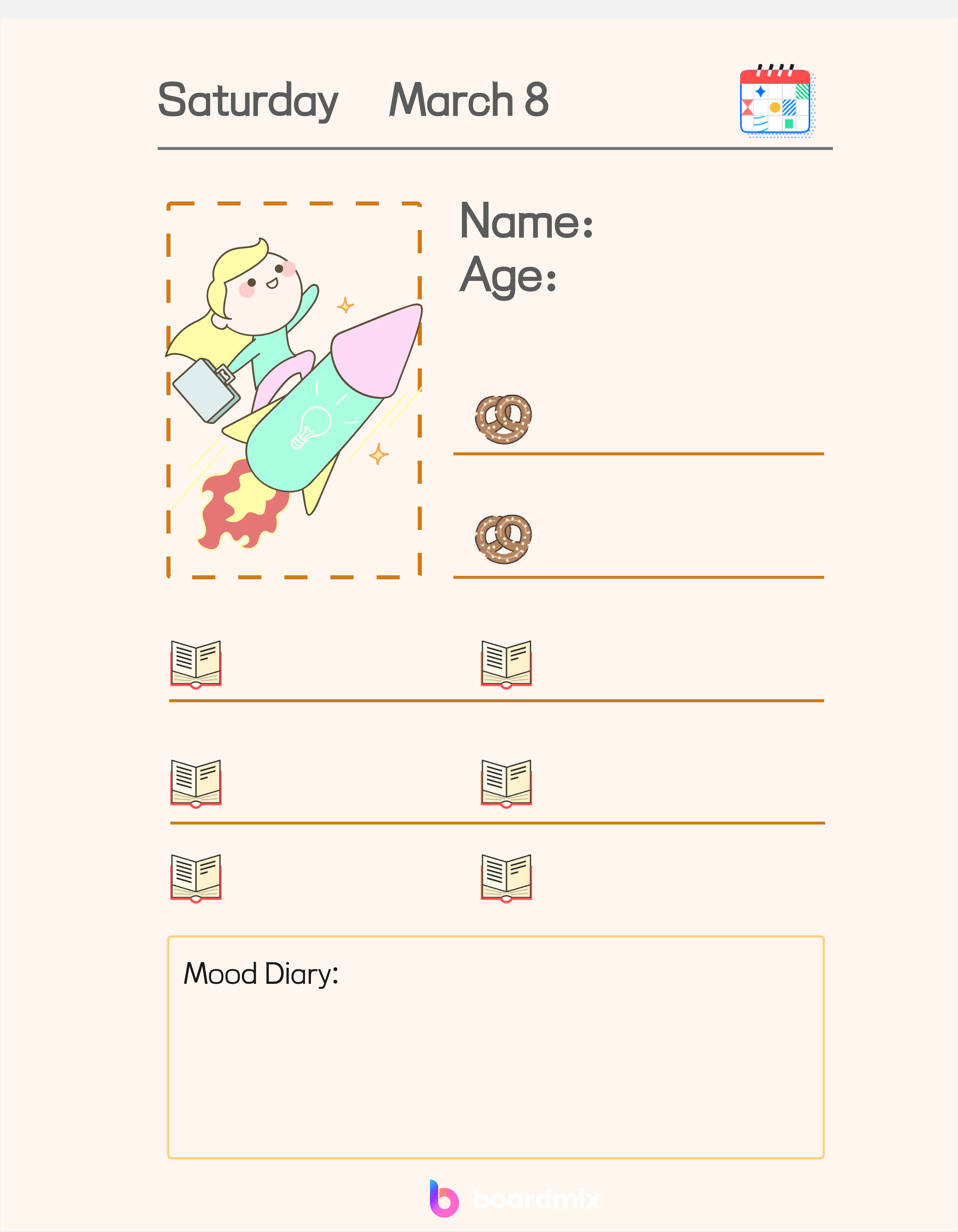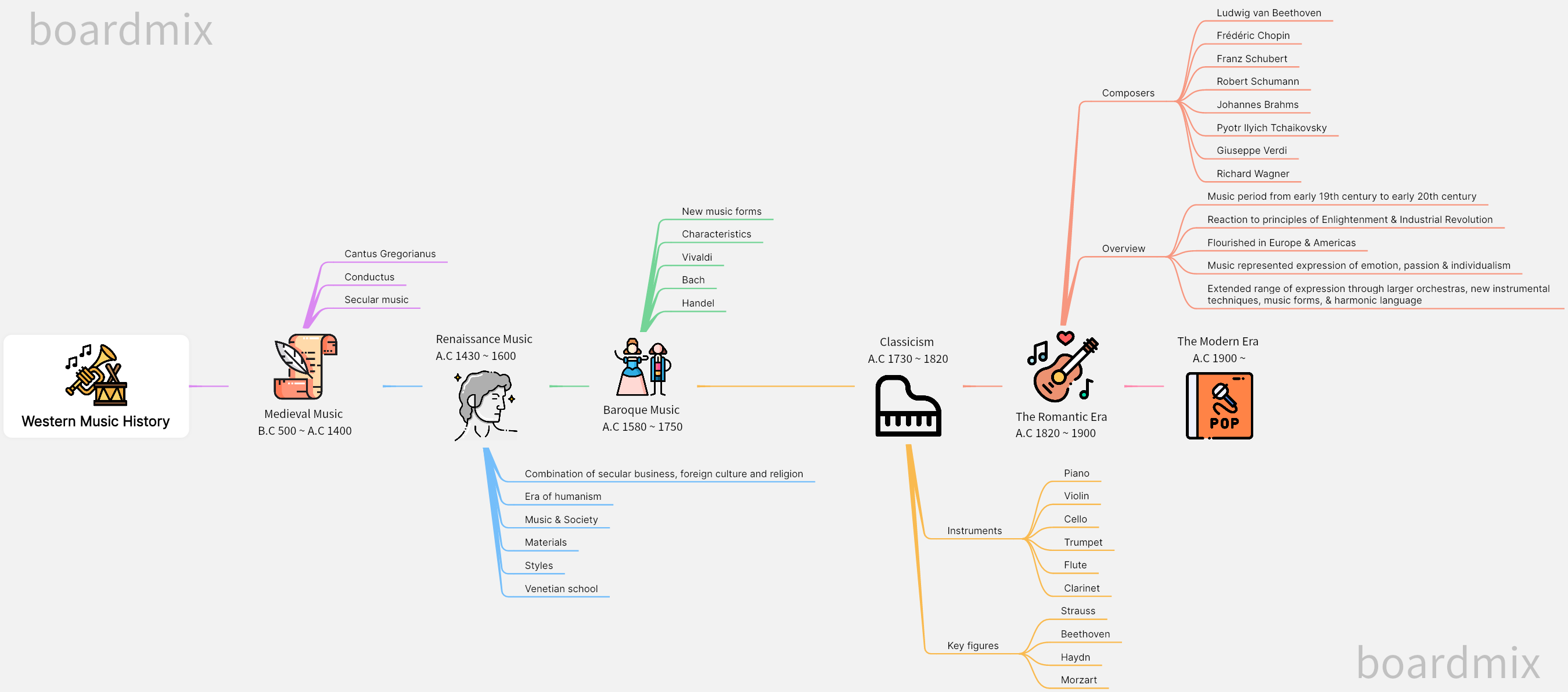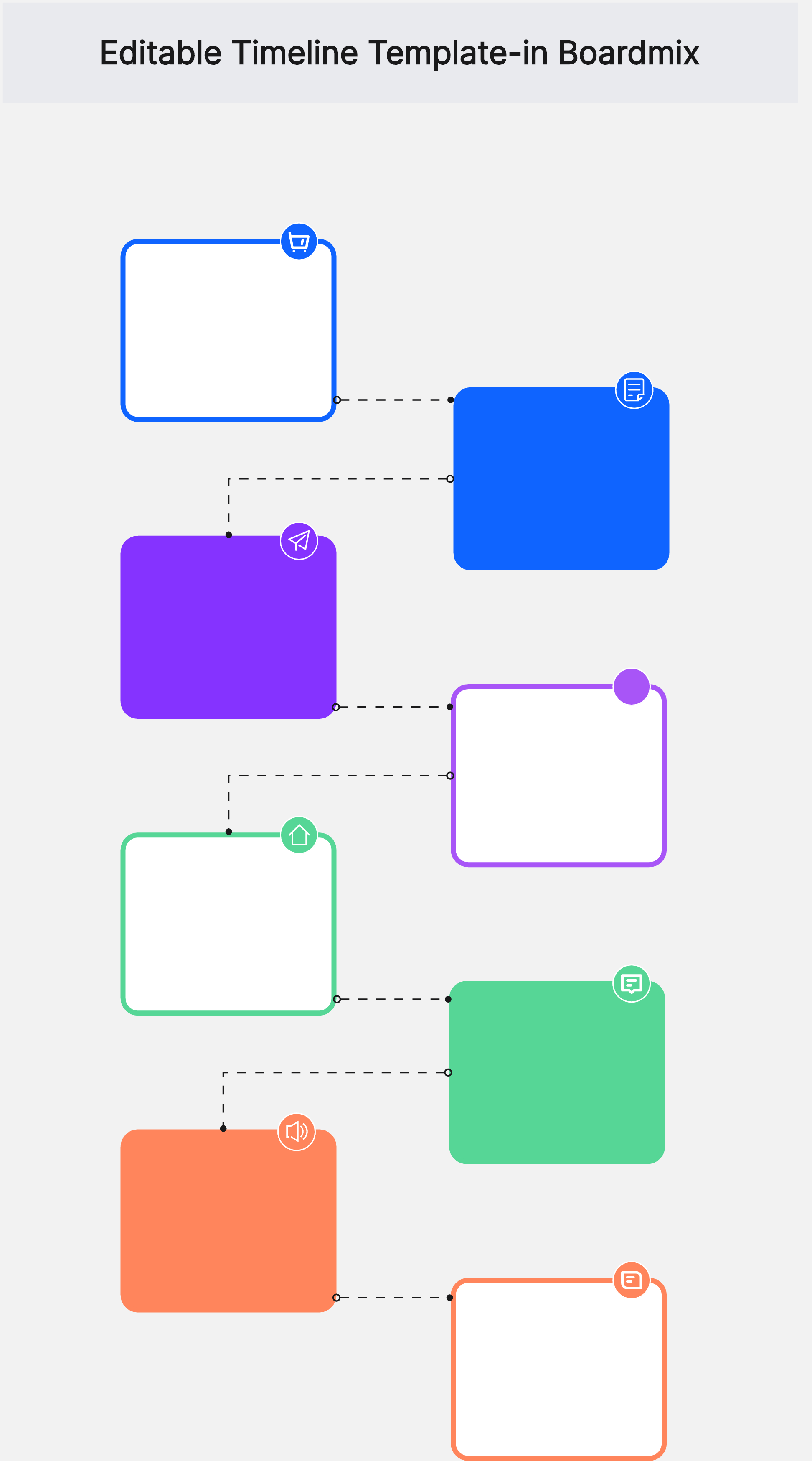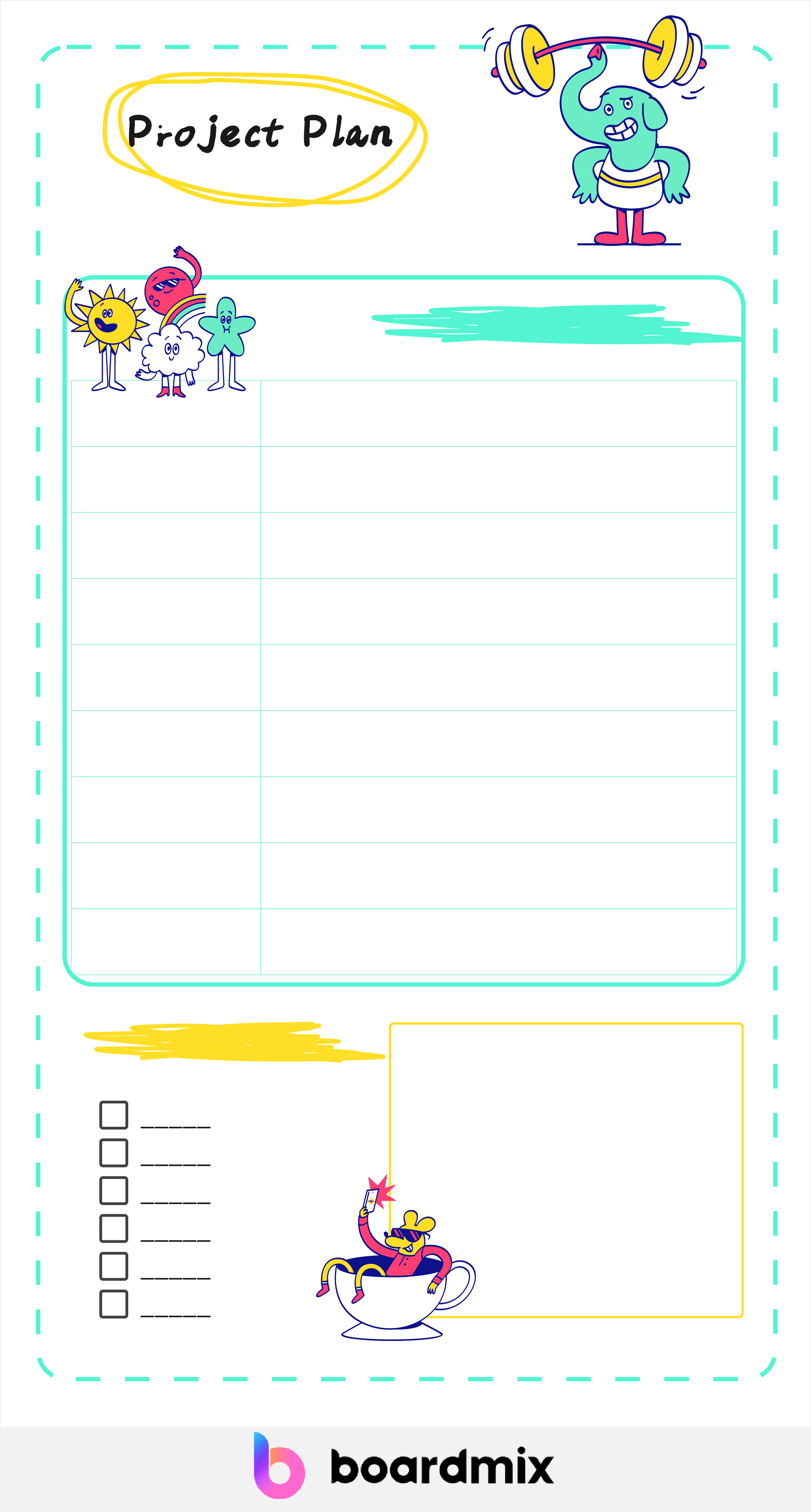Carrying out a kindergarten timeline project is like setting sail on an early learning journey. It is about introducing young people to the concepts of time and sequence through fun and engaging activities. But it's not just about putting pictures or events in order. It's designed to spark curiosity, promote understanding, and lay the foundation for essential skills like planning and organization.
So how do you create an effective timeline program for kindergarten children? What elements should it contain to ensure it is age-appropriate and engaging? Most importantly, how can such a program contribute to your child's early learning journey? Let's delve into these questions together and explore the world of kindergarten timeline programs and their potential to shape young learners' understanding of time and sequence.

What is the Kindergarten Timeline Project?
The Kindergarten Timeline Project is a learning activity designed for kindergarten students to help them understand the concept of time and historical events. It involves creating a visual representation of a timeline that showcases important events or periods in history. The project can be customized to focus on a specific theme or topic, such as the life cycle of a butterfly or the history of transportation. Students are encouraged to engage in hands-on activities, such as creating crafts or artwork, to depict the events on the timeline. This project helps develop their cognitive skills, creativity, and understanding of the passage of time.

How to Choose Age-Appropriate Timeline Topics for Kindergarteners?
Choosing age-appropriate timeline topics for kindergarteners is an important aspect of their learning and development. Here are some tips to help you choose suitable topics:
- Consider their interests: Kindergarteners are curious about the world around them. Choose topics that align with their interests, such as animals, nature, or famous historical figures.
- Keep it simple: Option for topics that are easy to understand and relate to. Avoid complex events or concepts that may be too advanced for their age group.
- Use visuals: Kindergarteners are visual learners. Incorporate pictures, illustrations, or videos to help them better understand and engage with the timeline topic.
- Make it relatable: Choose topics that children can relate to their own lives or experiences. For example, a timeline about the growth and development of a butterfly or the seasons of the year.
- Introduce diversity: Include a variety of timeline topics to expose kindergarteners to different cultures, traditions, and historical events. This helps broaden their knowledge and understanding of the world.
- Incorporate interactive activities: Engage kindergarteners in hands-on activities related to the timeline topic. This could include arts and crafts, role-playing, or storytelling.
- Keep it age-appropriate: Ensure that the content and language used in the timeline topic are suitable for kindergarteners. Use simple and clear language that they can easily comprehend.
Remember, the goal is to make learning fun and engaging for kindergarteners while providing them with age-appropriate knowledge and understanding of different timelines.

Simple Craft Ideas for Kindergarten Timelines Project
Creating simple craft ideas for a kindergarten timeline project can make the learning experience more interactive and enjoyable for the children. Here are some craft ideas that you can incorporate into the project.
- Paper Chain Timeline: Create a timeline using colored construction paper strips. Each strip represents a specific event or period in history. The children can write or draw pictures on each strip to depict the event, and then link them together to form a chain.
- Popsicle Stick Figures: Use popsicle sticks to create small figures representing important individuals or characters from different periods. The children can paint or color the sticks and add facial features and clothing using paper or markers.
- Collage Timeline: Provide magazines or printed pictures related to the timeline topic. The children can cut out the pictures and arrange them on a large piece of poster board or cardboard to create a collage representing different events.
- Handprint Time Capsule: Have each child trace their handprint on a piece of colored paper and write their name and the current year. Encourage them to think about their hopes and dreams for the future. Seal the handprints in an envelope or container to be opened at a later date.
- Storybook Timeline: Help the children create a mini-storybook that showcases different events from the timeline. They can draw pictures or use stickers to illustrate each event, and then write a short description or caption below each picture.
- Clay Sculptures: Provide clay or playdough for the children to sculpt objects or symbols representing different periods in history. They can mold the clay into shapes such as dinosaurs, castles, or spaceships, depending on the timeline topic.
Remember to provide guidance and support during the crafting process, and encourage the children to share their creations with their peers. These simple craft ideas will not only enhance their understanding of timelines but also develop their fine motor skills and creativity.

How to Apply Timeline Project to Early Learning Effectively?
Applying the timeline project to early learning can be an effective way to engage young children and enhance their understanding of historical events and the concept of time. Here are some tips on how to effectively apply the timeline project to early learning.
- Choose age-appropriate topics: Select topics that are relevant and age-appropriate for young children. For example, you can focus on themes such as seasons, holidays, or the life cycle of animals. This will make the project more relatable and engaging for the children.
- Use visual aids: Incorporate visual aids, such as pictures, drawings, or photographs, to represent each event or period on the timeline. This will help children visualize and connect with the historical events or concepts being taught.
- Make it interactive: Encourage active participation by involving children in hands-on activities. For example, they can create crafts, artwork, or models that represent each event on the timeline. This will allow them to explore their creativity and actively engage in the learning process.
- Provide context and background information: Before introducing each event on the timeline, provide children with context and background information. Explain why the event is significant and how it relates to the overall theme or topic being studied. This will help children develop a deeper understanding of the events and their historical significance.
- Encourage discussion and reflection: Create opportunities for children to discuss and reflect on the events or periods depicted on the timeline. Ask open-ended questions that encourage critical thinking and allow children to express their thoughts and ideas. This will help foster a deeper understanding of the concept of time and historical events.
- Display the timeline: Once the timeline project is complete, display it in a prominent place in the classroom or learning environment. This will serve as a visual reminder of the events studied and encourage further discussion and exploration.
Remember, when applying the timeline project to early learning, it is important to adapt the content and activities to suit the developmental level and interests of young children. Keep the learning experience fun, interactive, and age-appropriate to ensure maximum engagement and understanding.

How to Make Kindergarten Timeline Project Easily?
It will be beneficial for kindergarten children to learn and develop by picking age-appropriate timeline themes for them. Creating a kids timeline project in Boardmix can be a fun and educational activity for young children. Boardmix is a simple and fun online whiteboard tool that offers a wide variety of colorful shapes and they will be perfect for kindergarten children to learn. Here you can add multiple colorful graphics and also insert any cute pictures to enhance the fun of the timeline. It is very interesting and fun to make kids timeline projects at Boardmix, and Here are some steps to make the process easier.

- Log in to Boardmix: If you don’t have Boardmix yet, please use your email to register and log in to your account.
- Search for timeline templates; search for timelines in the template center, and you can choose theme templates suitable for kindergarten students. It could be a specific historical event, a famous person, or a topic related to nature or animals.
- Create a timeline: If you choose the Boardmix timeline template, you can edit and modify the template to a timeline that suits you. If you don't choose a template, you can customize your timeline.
- Add visual effects: The toolbar on the left side of Boardmix provides rich lines and graphics, and you can modify their colors to attract children. At the same time, you can also drag interesting pictures into your timeline, which is very easy in boardmix! You can use pictures or drawings to represent each event on the timeline. This will make it more visually appealing and help children better understand and remember the event.
- Create titles: Write a short title or description for each event on the timeline. These titles should provide basic information about the event and its significance.
- Show and discuss: You can save or share your timeline project and modify it at any time. You can now present and discuss the timeline project with the children in class, allowing them to share what they know about each activity and ask questions to encourage further understanding. During this process, you can still edit your timeline at any time and use brushes to capture your children’s inspiration at any time!

By following these steps, you can easily create a kindergarten timetable project in Boardmix that engages and educates young children. Remember to make your timeline project interactive, age-appropriate, and fun for the kids. Encourage them to actively participate and express creativity. Not only does this enhance their understanding of historical events, it also develops their cognitive and fine motor skills.
Conclusion
To recap, the Kindergarten Timeline Project emerges as a delightful and educational journey for young learners, introducing them to the concept of time creatively and engagingly. This project aims to make early learning not only informative but also enjoyable, setting the stage for a lifelong appreciation of history and storytelling.
As you embark on creating a Kindergarten Timeline Project, consider the ease and collaboration offered by Boardmix. This online collaborative teamwork tool is designed to simplify the process of making timelines for kindergarteners, providing a user-friendly interface and collaborative features that enhance the overall learning experience.

Take action today and leverage Boardmix to make the Kindergarten Timeline Project a memorable and enriching experience for young learners. Boardmix stands ready to empower educators and parents in fostering a love for learning that begins with the Kindergarten Timeline Project—where education meets collaboration seamlessly.













